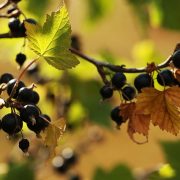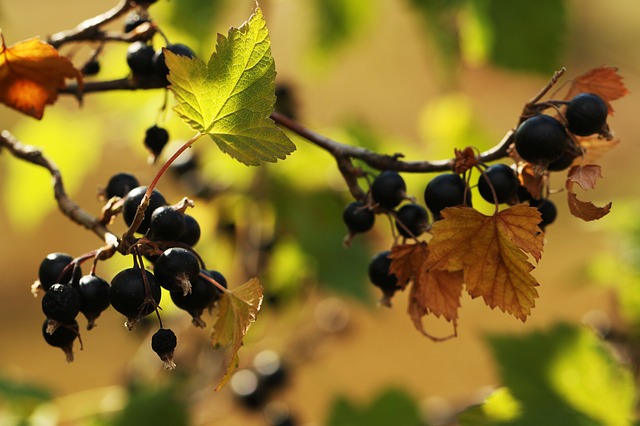Blackcurrant Wine Recipe – Fruity, Dry Red
Blackcurrants are known as the “forgotten fruit” and it is easy to see why when they are very rarely available to buy in any of the main supermarkets. The great news, however, is you can easily find them at pick your own farms up and down the UK and the next bit of good news is they make great wine. This blackcurrant wine recipe is definitely one to try.
Fruits like Blueberries and Avocados are known as superfoods but blackcurrants have all the same health benefits and a grown right here in the UK. Blackcurrants were a fruit crucial for the British during the second world war, this was the first appearance of Ribena, a blackcurrant cordial that was used to ensure children got enough vitamin C. Blackcurrants have around 4 times more vitamin C than oranges weight for weight.
Blackcurrants now are most commonly available from pick your own farms and growing in people’s gardens. They are easy to grow and it is well worth planting some for wine making alone with an established single bush able to produce between 4 – 6 kg of fruit a year. Seasonally they may be available at some higher end supermarkets for a few weeks to a month during the year.
Table of Contents
Blackcurrants For Winemaking
Blackcurrants are sharp, tart and full of juice which is perfect for wine making. The skins are full of flavour too with polyphenols and some tannin that enhances the wine above most other fruit wines I can think of.
You can compare the blackcurrant wine to an elderberry wine but it has fewer tannins and a juicier, fruiter palate with a touch of acidity. Both wines, however, rank among the best fruit wines for the home winemaker.
Blackcurrants themselves produce a deep purple coloured wine depending on how long the berries are steeped for. Anyone familiar with Ribena will have a fair idea of the colour of the finished wine.
As for selecting the fruit, you will want to find the ripest berries possible. If you are picking your own you will know that the blackcurrants grow in strings of berries. You can harvest a whole string of berries at a go as long as they have all ripened and turned black. Some older varieties of blackcurrants ripen at different times. The top berries in the string will ripen first so rather than pulling off whole strings select the ripest berries first.
Preparing The Blackcurrants For Making Wine
To get the berries ready for wine making you will need to pick from them removing any mouldy of damaged blackcurrants. Remove any leaves and the pick the berries away from the stems they grow on. Leaving any green plant matter in the wine can result in bitterness and astringency.
The blackcurrants can be frozen before making the wine and doing so will help to release the juice when they are thawed ready to make the blackcurrant wine.
What You’ll Need To Make Blackcurrant Wine – Makes 1 gallon / 4.5 litres
- Large Stock Pot
- Small Fermenting Bucket
- Demijohn
- Syphon
- Fine Straining Bag
- Potato Masher
- Airlock & Bung
Blackcurrant Wine Ingredients
- 1.6kg Blackcurrants
- 4 litres Water
- 1kg Sugar
- Acid Blend (optional)
- 1/2 tsp Pectic Enzyme
- 1 tsp Yeast Nutrient
- 1 Campden Tablet
- 1 Sachet Yeast (Lallemand EC-1118 is a good choice but experiment with others)
Blackcurrant Wine Method
1. Add the prepared blackcurrants to a straining bag in the bottom of a sanitised fermenting bucket. Take the masher and begin to crush the berries to break them apart and liberate the juices. Secure in the straining bag.
2. In a large pan heat up half the water and slowly add the sugar to dissolve. Keep stirring to avoid any scorching and bring to the boil. Once boiling turn down to a simmer for a few minutes and then remove from the heat.
3. Pour the boiling sugar water over the blackcurrants and mix thoroughly, add the remaining cool water to bring the temperature down. Allow the must to cool for a few hours to room temperature.
4. Once cooled add the crushed Campden tablet and mix thoroughly. Cover the fermenter loosely with the lid and leave for 12 hours.
5. After 12 hours add the pectic enzyme and leave for a further 24 hours.
6. After 24 hours has passed add the yeast nutrient and stir thoroughly and then add the yeast by sprinkling onto the surface, there is no need to stir the yeast in. Fit the lid and airlock and allow fermentation to begin.
7. Fermentation should start a few days after pitching the yeast. Allow the blackcurrants to ferment in the wine for 7 days.
8. After 7 days lift out the straining bag with the blackcurrants and allow to drain. Squeeze out the bag gently to extract some of the juices and discard the blackcurrants.
9. Leave to ferment for a further 3 days, after this transfer the wine using a syphon to a demijohn for further fermentation and conditioning.
10. Allow the wine to condition in the demijohn for a minimum of 4 – 6 months transferring to a new demijohn after sediment has built up around midway through conditioning.
11. After bulk ageing rack the wine to bottles, if you wish to back sweeten the wine now is the time to do so using this guide. Now is also time to adjust the acidity should you wish, mix the acid blend with a small amount of boiled water and add to the wine in small amounts to achieve your desired acidity.
It is a good idea to set aside bottles of blackcurrant wine for at least 4 – 6 months before sampling. This wine is one that keeps getting better with age so a year will see it at its peak if you can wait that long.





Leave a Reply
Want to join the discussion?Feel free to contribute!